Fortnite mobile head-to-head: Android vs iOS vs Switch
The best builds.
The arrival of Fortnite on Android completes the set - Epic's remarkable cross-play juggernaut is now available on pretty much every games-capable device running a modern GPU. We've looked at the console and iOS versions in the past, but with the Android release, we wanted to take a closer look at how Fortnite looks and runs across a gamut of mobile devices from top-end smartphones down to Nintendo's Switch running in mobile mode. The inclusion of the Nintendo hybrid is fascinating, revealing how low-level graphics APIs and a dedicated gaming focus allow for older mobile hardware to directly compete with - and sometimes even surpass - the outputs of today's top-end phones.
For the purposes of testing the Android version - and specifically, installing the game while bypassing Google Play - Epic sent us a Samsung Galaxy S9+, one of the most powerful handsets on the market. The firm's PR company warned us in advance that graphics comparisons won't be particularly interesting as iOS and Android effectively deliver an identical experience. By and large, that is indeed the case - the iOS port is excellent and running captured footage side-by-side with the Android build, you'd struggle to tell much of a difference.
Stacking up the S9+ powered Fortnite against the iPhone X version, there were only two variations of note. First of all, likely owing to screen aspect ratio differences, the Samsung phone actually delivers a higher native resolution - 1480x720 up against 1461x675 on the Apple flagship. Secondly, in very rare instances, iPhone X seems to resolve more detail in the far-flung distance - though by and large, even this is identical in most situations. The key takeaway is that Epic's work on Android is just as impressive as it was on iOS, but there is more one more significant difference worthy of note - selectable quality settings.
It's a situation that's common on mobile games. With a limited number of Apple devices, developers can target their titles with specific visual feature sets on a per-device basis. However, while Fortnite is currently exclusive to Samsung handsets, eventually the game will be available to play on a vast range of Android hardware, necessitating the inclusion of four quality presets for users to choose between: low, medium, high and epic, along with selectable 30fps and 20fps frame-rate caps. The Galaxy S9+ runs comfortably on epic at 30fps, while our tests showed that the Galaxy S7 (the lowest spec phone Fortnite currently runs on) defaults to low settings at 20fps.
The screenshot comparisons on this page detail the key differences, but essentially, the high setting culls far-flung environment detail and some foliage, while medium drops resolution to 675p on the S9+ and removes all foliage and dynamic shadows. The low setting seems to be much the same as medium, albeit with a big drop in pixel-count to 450p. The chances are that the iOS version features similar cuts to visuals across the stack of iPhones and iPads depending on their age, though the entry-level iPhone 6S did aim for 30fps gameplay when we tested it.
With iOS and Android effectively delivering very, very similar results, the most fascinating point of interest is a comparison with Switch's mobile configuration. In technological terms, it has a whole host of disadvantages stacked up against the state-of-the-art Snapdragon 845 in our particular Galaxy S9+ example, while the iPhone X's A11 Bionic is - on paper, at least - even more powerful. Switch's Tegra X1 is a three-year-old processor and it's also downclocked substantially to a max of just 384MHz on the GPU when running undocked. With just three available ARM Cortex A57 CPU cores clocked at a paltry 1.0GHz, there's no way it should be able to compete. But somehow it does, and packs a few features that its mobile counterparts don't possess.
That Fortnite is as good as it is on Switch reminds us of the key advantages in developing for a fixed console platform. Epic Games can port the game knowing that every unit out there is the same, and its efforts are bolstered by the fact that it can leverage the NVN graphics API - a DX12-like interface to the GPU that allows the developers to access the GPU directly. There's also the fact that as a dedicated games machine, developers don't need to compete for system resources with other tasks.
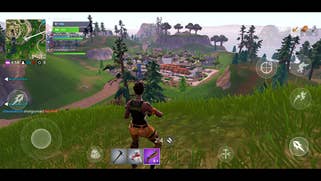
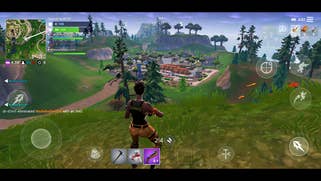
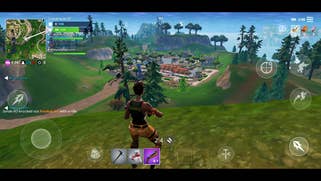

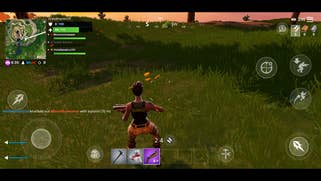


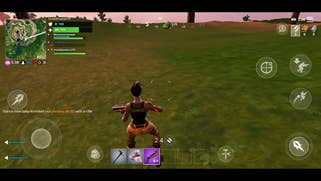
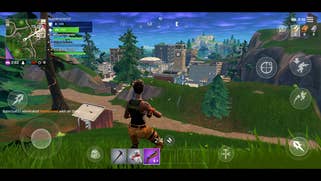
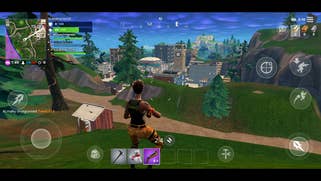
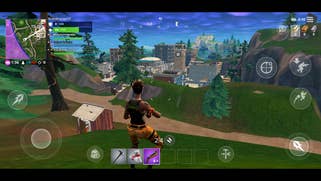

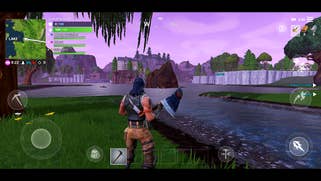
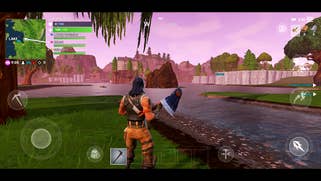
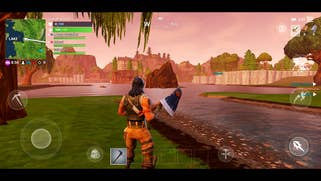
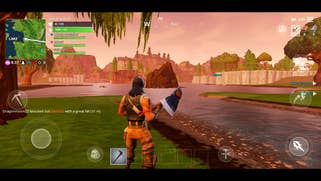
The end result is that while Fortnite in mobile mode is essentially outgunned by the S9+ and iPhone X in a couple of key areas, smart utilisation of the hardware keeps it very much in contention. Take resolution, for example. In mobile mode, Switch has a dynamic 720p pixel count - but it is variable and it's clearly not as clean as its mobile counterparts. However, Switch is able to use high-end Unreal Engine 4 features like temporal reconstruction, while reducing resolution makes a good fist of keeping frame-rates close to the target 30fps. View distances are lower on Switch in some respects, but it's not really a big deal on the smaller screen.
There are plenty of commonalities in visual quality between all the mobile versions - water rendering is much the same, for example, and not a patch on Xbox One X with its phenomenal H2O and beautiful screen-space reflections. However, Switch takes a few features from the full console versions that mobile doesn't get. For example, grass rendering distances may be pared back on Nintendo's handheld, but the foliage is animated and is lit more in line with the other console versions, while on both iOS and Android, even the top-end experience features flat grass with no visible animation. Edge treatment is also improved - Switch gets anti-aliasing (which may possibly be one of the reasons behind the slightly blurry look) whereas geometry on both iOS and Android on top-tier devices looks pretty raw by comparison.
Additionally, dynamic environment detail - the walls and ramps built by players - seems to have two very different implementations. The standard console versions feature more detailed construction than the dedicated mobile releases with more geometry and very different textures. In this area, Switch benefits from the more detailed assets, making it a cut above the iOS and Android ports. This could possibly a factor of the dedicated 3.5GB of RAM developers have access to on the Nintendo console hybrid.






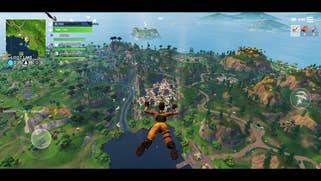


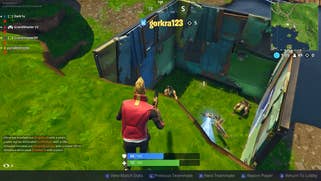


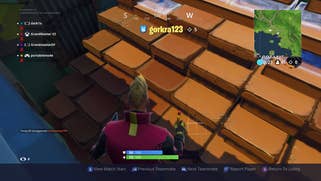

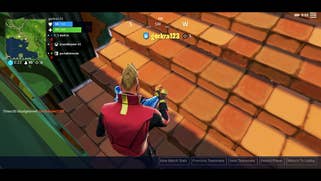





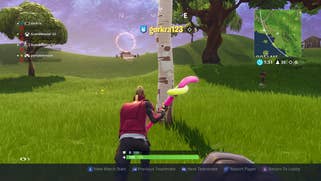

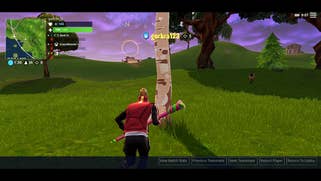
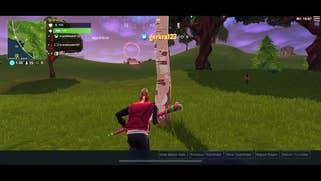
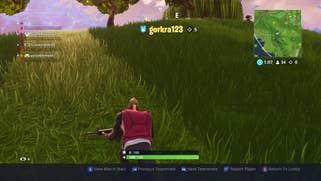
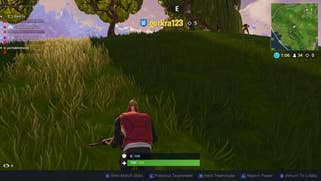
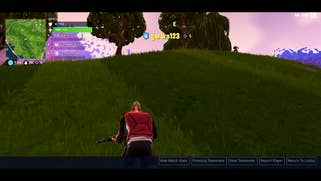


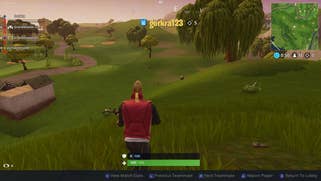




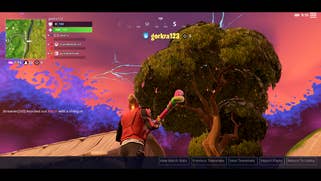

But perhaps the biggest Switch advantage is the fact that the console has proper physical controls. Smartphones use the touchscreen for primary control which definitely does the job, but doesn't feel at all precise. Epic has made some tweaks here since the title launched on iOS - for example, there's an auto-fire option that kicks in as soon as an enemy is locked in your sights, which is immensely helpful. Additionally, while cross-play is a feature that allows any player on any piece of hardware to buddy-up and play in the same game, Epic keeps console users and mobile gamers apart by default to ensure a level playing field. The bottom line though - given the choice of mobile hardware for playing the game, Switch would be my choice.
But my personal preference here likely misses the point. Fortnite on iOS and Android opens up the game to a massive new audience, as the smartphone is far ubiquitous than any games console. On top of that, what these devices lack in physical controls is countered by the fact that everything you need to play is integrated in the device itself. For truly portable play, the Switch needs a WiFi access point or a smartphone to tether with, while every phone that Fortnite is compatible with comes equipped with a decent high-speed, low latency modem.
Where Epic deserves kudos is in its drive to bring Fortnite to all devices with as little in the way of compromise as possible. At some point there must surely have been the temptation to follow the route taken by the PUBG Corporation in essentially paring back the core game to run more effectively on a smartphone. Instead, the developer made the harder choice - to take the original game and optimise it heavily, achieving 60fps on the home consoles before pushing further to get the game running well on iOS. In turn, this opened the door to Switch and Android versions - all completely compatible with one-another. The fact that they're delivered looking as good as they do, with frame-rates that stick so consistently to the target 30fps is remarkable. The biggest game in the world right now isn't just a popular phenomenon, but an exceptional technical achievement too.









.png?width=291&height=164&fit=crop&quality=80&format=jpg&auto=webp)







